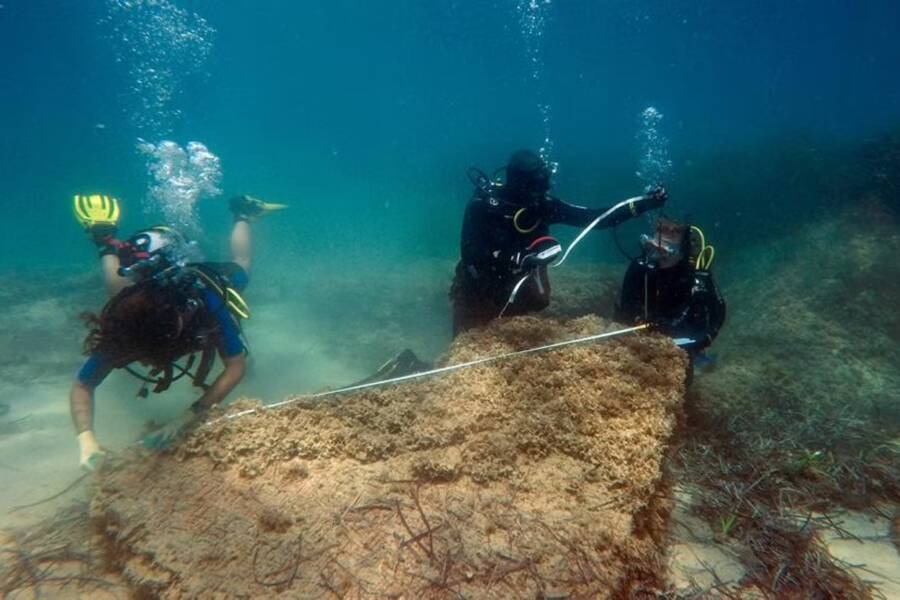Neapolis, The Sunken Roman Port City Off The Tunisian Coast

National Heritage Institute Tunisia / University of Sassari
Marine archaeologists examining the remains of the ancient port city of Neapolis.
The ancient city of Neapolis was once a major Roman city on the Tunisian coast, established as a trade port by the Greeks of Cyrene in the fifth century B.C.E., later coming under Roman control when the Roman Empire conquered North Africa.
Today, the city of Nabeul stands where most of Neapolis once was, but historians knew that a portion of the ancient city had been fully submerged after a massive tsunami in 365 C.E.
But in September 2017, a joint Tunisian-Italian archaeological mission explored the sunken city of Neapolis, uncovering Roman street signs and various monuments littered about the ocean floor.
The expedition both confirmed that Neapolis had been hit by the tsunami, and that it was a major manufacturing center for garum, a fermented fish sauce, and salt fish in the Roman Empire.
In fact, these exports had likely made some people in Neapolis very wealthy — and the city itself was likely the center of production for these sought-after food items.
Little had been known of ancient Neapolis, as records were scarce — likely due to resentment over the city’s siding with Carthage in the Third Punic War — but unveiling the remains of the sunken city revealed much about life in the Roman Empire.





